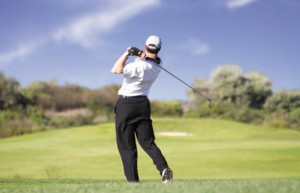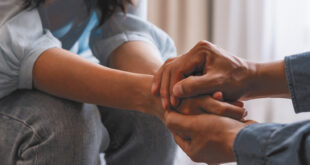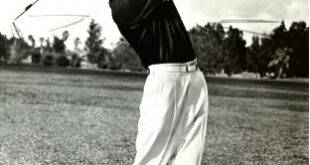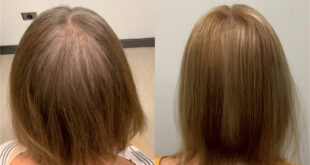Golfer’s elbow and other injuries (other than pride) from hitting that little white ball
By Matthew Stiebel, MD, FRCSC –
 It’s almost that time of year again when the Honda Classic invades our community and showcases some of the best golf games around. To the rest of us, from scratch golfers to hacks like myself, we watch in awe and put ice on our ailing golf war-wounds. As an orthopaedic surgeon, by far and away, the most common injury I see among avid golfers is elbow pain.
It’s almost that time of year again when the Honda Classic invades our community and showcases some of the best golf games around. To the rest of us, from scratch golfers to hacks like myself, we watch in awe and put ice on our ailing golf war-wounds. As an orthopaedic surgeon, by far and away, the most common injury I see among avid golfers is elbow pain.
Elbow pain can be subdivided into lateral (the thumb side of the elbow) and medial (the pinky finger side of the elbow) pain. If your elbow hurts on the lateral side, often this is due to a condition called lateral epicondylitis or simply “tennis elbow.” It should be pointed out that you don’t have to actually play tennis to get “tennis elbow.” It can come from all sorts of repetitive strain activities—from lifting heavy bags of groceries, to picking up small children, to playing golf, or in my case from losing at all those arm swinging Nintendo Wii games. With proper arm braces and NSAIDs, some day I may beat that little video hustler I like to call my nine year old cousin.
Tennis elbow is often diagnosed with pressure on the outside of the elbow and resisted wrist extension. If that reproduces the pain- you probably got it. From a pathology perspective, tennis elbow is the result of chronic micro-tearing of the wrist extensor tendons from their originon the distal humerus. The tendons slowly tear away and heal themselves with scar tissue; unfortunately this new tissue is not anatomically normal- and therefore leads to pain when stressed. To treat this problem orthopaedic surgeons typically follow a standard algorithm. We often start treatment with tennis elbow braces, anti-inflammatory meds, and avoidance of the aggravating activities. Additionally we often inject cortisone into the tendon origin on the lateral side of the elbow. If these conservative treatments work, then “we win” and the problem is solved. Tennis elbow, however, is often a fickle beast and can be difficult to defeat. Should the problem persist we can add a regime of physical therapy and even topical gels laced with anti-inflammatories or steroids. Failing all of this we can inject plasma recombinant platelets (PRP) or proceed to a small open or arthroscopic surgery to remove the painful scar tissue.
If the pain is on the medial or inside of the elbow we call it medial epicondylitis or “golfer’s elbow.” Golfer’s elbow is similar to tennis elbow because it also involves micro-tearing of the wrist flexor tendons away from their origin on the distal humerus. It can be more complicated, however, if the problem is related to some medial elbow instability or to ulnar nerve pathologies. Initial treatment is, however, similar to tennis elbow in terms of bracing, anti-inflammatories and injections. Medial epicondylitis resistant to these therapies may also require surgery.
Interestingly, I see more tennis elbow pain in my patients who play golf than I do actual golfer’s elbow. I’ll let you, the reader, in on a little secret. Tennis elbow pain occurs more frequently in golfers who have poor technique and poor swing. Golfer’s elbow happens to patients who are actually excellent golfers with correct form- and just overwork the medial side of their elbow. So, the next time you meet a golfer with elbow pain, check to see what side it hurts– it can tell you a lot about their handicap. As for me, I’ll take my tennis elbow and pretend it came from my last battle with Federer or the Williams sisters…
Matthew Stiebel, M.D. FRCSC
Board Certified, Fellowship Trained Orthopaedic Surgeon
Matthew Stiebel, MD FRCSC, is the newest partner at Palm Beach Sportsmedicine. After un-
dergraduate and medical school degrees at Yale University, he completed an orthopaedic surgery residency at McGill University and a subspecialty fellowship in sports medicine at Boston University. His specialties include complex shoulder and knee injuries. Dr Stiebel has published papers and book chapters on specialty surgeries of the knee and shoulder. He is an associate master instructor for the Arthroscopy Asscociation of North America, where he instructs both arthrocopic shoulder and patellofemoral knee courses for surgeons in the US and internationally. He has lectured to the International Patellofemoral Reseach Group in London and New York City, and has worked with patellofemoral implant design companies. His other current interest involves the repair of pectoralis major muscle tears and their subsequent outcomes. While in Montreal, Dr Stiebel worked with the Montreal Canadians Hockey team and Expos Baseball team. During his fellowship time in Boston he was able to serve as team physician for the NCAA championship BU men’s hockey team, UMASS Boston Hockey, as well as work with the World Wrestling Entertainment Summer Slam Series. Locally, Dr Stiebel stays active in the community by currently serving as team physician for some of the local high school football and gymnastics programs.
Certificates/Memberships:
– Board Certification: American Board of Orthopaedic Surgery, July 2012
– American Academy of Orthopaedic Surgeons
– Fellow, Royal College of Physicians and Surgeons of Canada American Arthroscopy Association of North America
– International Society of Arthrosocopy, Knee Surgery & Orthopaedic Sports Medicine
– International Patellofemoral Reseach Group
PALM BEACH SPORT MEDICINE
(561) 845-6000
www.pbsportsmed.com
 South Florida Health and Wellness Magazine Health and Wellness Articles
South Florida Health and Wellness Magazine Health and Wellness Articles




